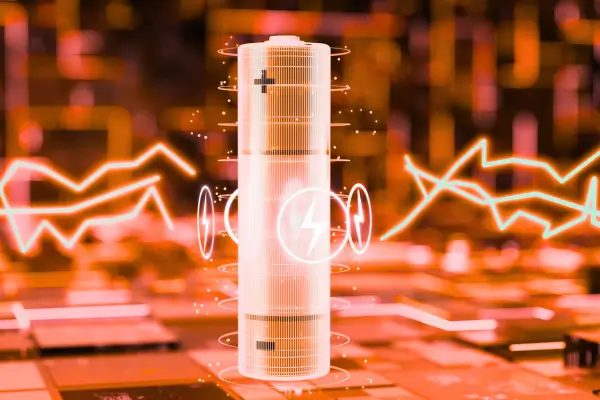As the demand for advanced energy storage systems continues to soar, researchers and engineers are increasingly turning to cutting-edge deposition technologies to optimize battery performance. One such innovation is the Hybrid Molecular Beam Epitaxy (MBE) Source for advanced battery electrode deposition. This hybrid approach is a game-changer for the design, fabrication, and enhancement of electrode materials, promising to unlock new levels of efficiency, capacity, and longevity in energy storage devices. [1] In this blog, we will dive deep into the mechanics of Hybrid MBE, its applications in battery technology, and how it is paving the way for next-generation high-performance batteries.
What is Hybrid MBE, and How Does it Work?
Molecular Beam Epitaxy (MBE) is a well-established thin-film deposition technique that is widely used in the fabrication of semiconductors, optoelectronics, and other advanced materials. The hybrid MBE source combines the precision of traditional MBE with additional capabilities like sputtering or pulsed laser deposition (PLD), providing enhanced flexibility for the deposition of complex electrode materials.[2]
In a typical MBE setup, atomic or molecular beams are directed onto a substrate in a vacuum chamber, where they condense to form a thin film. The hybrid MBE source integrates multiple material sources into a single system, allowing precise control over material composition, film thickness, and interface quality. This enables the deposition of multilayer structures, alloy films, and heterostructures, which are essential for next-generation battery electrodes. [3]
The key benefits of the hybrid MBE technique include:
- Atomic Layer Control: Achieving precise control over layer-by-layer growth for ultra-thin films with uniform thickness.
- High Purity Materials: High vacuum conditions minimize contamination, ensuring ultra-pure, defect-free films.
- Complex Material Combinations: The ability to integrate multiple materials for tailored battery electrode properties, including nanoscale doping, alloy formation, and composite structures. [2]
Applications of Hybrid MBE in Battery Electrode Deposition
Battery technology, especially for lithium-ion (Li-ion), solid-state, and sodium-ion batteries, has seen rapid advancements in recent years. However, one of the key challenges is improving the performance of electrode materials. Hybrid MBE deposition techniques offer a unique solution by enabling precise control over the fabrication of nanostructured electrodes that enhance battery performance. Let’s look at some specific applications:
- High-Capacity Anode Materials: The performance of anode materials directly impacts the charge/discharge cycles and energy density of batteries. Hybrid MBE allows for the fabrication of high-purity anodes made from materials like silicon (Si), graphene, and tin (Sn). By controlling the deposition of silicon or its alloys, it is possible to enhance their capacity retention and reduce issues such as volume expansion during cycling, a known problem with silicon anodes. [4]
- Advanced Cathode Materials: In cathode materials, precision control over metal oxide layers such as LiCoO2 and LiFePO4 can improve charge capacity and stability. Hybrid MBE is also used for the deposition of high-performance cathodes that enhance the overall efficiency and safety of batteries, especially for solid-state batteries that require precise control over the electrolyte and cathode interfaces.[5]
- Multilayer and Nanostructured Electrodes: Hybrid MBE deposition techniques can create multilayer structures with engineered interfaces. These multilayer electrodes can improve the charge transport and ion diffusion rates. In addition, nanoscale coatings or heterostructures provide enhanced stability and cycle life, making them ideal for high-power applications like electric vehicles (EVs) or renewable energy storage systems.[6]
- Thin Film Batteries and Microbatteries: In microelectronics, thin film batteries are essential for powering miniature devices such as medical implants, wearables, and sensors. Hybrid MBE offers the ability to deposit thin-film electrodes with precise thickness and uniformity, ensuring high performance in compact energy storage solutions.[7]
Key Advantages of Hybrid MBE for Battery Electrode Deposition
- Precision Control Over Material Composition: Hybrid MBE allows for high precision in controlling the composition of battery electrodes. This is particularly important for multi-component electrode materials where exact material ratios can significantly affect the performance and stability of batteries.
- Tailored Nanostructures: The technique’s ability to create nanostructured surfaces ensures that electrodes have high surface area and porosity, improving ion diffusion and charge/discharge rates. This is particularly beneficial for high-performance batteries used in electric vehicles and renewable energy storage.
- Reduced Contamination and Defects: With the ultra-high vacuum environment of MBE, contamination is minimized, leading to defect-free films that are essential for long-lasting battery performance. This is crucial for solid-state batteries that require high material purity for optimal conductivity and safety.
- Scalable Fabrication for Next-Gen Devices: Hybrid MBE is highly scalable, making it suitable for both research-scale development and large-scale commercial production of advanced battery electrodes.[8]
Future Prospects and Challenges
The integration of hybrid MBE technology in battery electrode deposition is still in the developmental phase, but its potential for high-performance energy storage devices is vast. Researchers are continuously exploring the role of hybrid MBE systems in the development of next-generation batteries, such as solid-state and lithium-sulphur batteries, that require precise control over electrode architecture.[9]
However, there are challenges to overcome. The high cost and complexity of MBE systems, combined with the need for extremely clean environments and specialized equipment, present barriers for widespread adoption. Additionally, achieving consistent quality control across large-scale production remains a critical factor for mass adoption in the energy storage market. [8]
Why Choose Nikalyte’s Hybrid MBE Source for Advanced Battery Electrode Deposition?
When developing advanced battery electrode materials, precise control over deposition techniques is crucial for ensuring high-performance and long-lasting energy storage. Nikalyte’s Hybrid MBE Source offers a powerful solution for battery electrode deposition, delivering customizable metal-organic precursor injections for the precise growth of complex materials. This innovative system integrates metal-organic precursor injection with traditional effusion cell growth, ensuring uniform deposition and high-quality thin films for battery electrode materials. With independent temperature control and a high-purity all-metal UHV construction, the Hybrid MBE Source guarantees consistent and stable growth, making it perfect for materials like lithium cobalt oxide (LCO), lithium iron phosphate (LFP), and high-capacity anodes. The ability to reload the source without venting the system ensures seamless operation, increasing efficiency for high-throughput manufacturing. For researchers and engineers working on the next generation of energy storage devices, Nikalyte’s Hybrid MBE Source offers unmatched precision, scalability, and reliability, empowering the development of cutting-edge battery technologies. [10]
Conclusion
The Hybrid MBE Source for advanced battery electrode deposition is a cutting-edge solution that promises to revolutionize the energy storage industry. By enabling precise control over the composition, thickness, and nanostructure of battery electrodes, this technology enhances the performance, efficiency, and longevity of energy storage devices. As the need for high-performance batteries continues to grow, hybrid MBE techniques will play a pivotal role in the next generation of energy storage technologies.
Contact us to speak with a technical expert about how hybrid MBE can optimize your battery electrode fabrication for next-gen energy storage systems.
References
- KC, B., Guo, J., Farrell, J., Nolis, G. M., Buchholz, D. B., Evmenenko, G., Cabana, J., Crabtree, G. W., & Klie, R. F. (2022). Molecular beam epitaxy (MBE) growth of model cathodes to study interfacial ion diffusion. Advanced Materials Interfaces. https://doi.org/10.1002/admi.202201187
- Choudhary, R., & Jalan, B. (2025). Atomically precise synthesis of oxides with hybrid molecular beam epitaxy. Device, 3(3), 100711. https://doi.org/10.1016/j.device.2025.100711.
- Nunn, W., Sandlass, S., Wegner, M., Haislmaier, R., Kumar, A., Tangi, M., LeBeau, J., Quandt, E., James, R., & Jalan, B. (2021). Hybrid molecular beam epitaxy growth of BaTiO₃ films. Journal of Vacuum Science & Technology A, 39, 040404. https://doi.org/10.1116/6.0001140.
- Osiak, M., Armstrong, E., Kennedy, T., Sotomayor Torres, C., Ryan, K., & O’Dwyer, C. (2013). MBE growth and structural and electrochemical characterization of tin oxide and indium tin oxide nanoparticles grown on silicon for Li-ion battery anodes. ECS Transactions, 53, Article 05310. https://doi.org/10.1149/05310.0001ecst
- Bilash, K. C., Guo, J., Farrell, J., Nolis, G. M., Buchholz, D. B., Evmenenko, G., Cabana, J., Crabtree, G. W., & Klie, R. F. (2022). Molecular beam epitaxy (MBE) growth of model cathodes to study interfacial ion diffusion. Advanced Materials Interfaces, 9(22), Article 202201187. https://doi.org/10.1002/admi.202201187
- Zhuang, J., Xu, X., Peleckis, G., Hao, W., Dou, S. X., & Du, Y. (2017). Silicene: A promising anode for lithium-ion batteries. Advanced Materials, 29(12), Article 201606716. https://doi.org/10.1002/adma.201606716
- Choudhary, R., et al. (2020). Atomically precise synthesis of oxides with hybrid molecular beam epitaxy. Device, 3(3), 100711. https://doi.org/10.1016/j.device.2025.100711
- Wieczorek, M., Wodyk, S., Widzińska, J., & Poliszkiewicz, R. (2024). Hybrid battery energy storage for light electric vehicle — From lab to real life operation tests. Journal of Energy Storage, 81, 110545. https://doi.org/10.1016/j.est.2024.110545
- Tran, Q. T., Huynh, T. B. T., Pham, T. H., Nallasani, U. R., Wang, H.-J., Diep, N. Q., Chou, W\.-C., Le, V.-Q., Wei, K.-H., & Vu, T. T. (2024). Molecular beam epitaxy of mixed dimensional InGaSe/GaSe hybrid heterostructures on C-sapphire. *ACS Applied Electronic Materials*, *6*(10), 7448-7455. https://doi.org/10.1021/acsaelm.4c01325
- Hybrid MBE Source. Retrieved July 15, 2025, from https://www.nikalyte.com/hybrid-mbe-source


